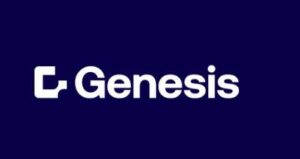The following is a guest editorial courtesy of Carolane de Palmas, Markets Analyst at Retail FX and CFDs broker ActivTrades.
The Nasdaq’s sharp decline last week has reignited debate among traders and analysts over whether this is merely a healthy pause after months of relentless gains or an early warning that the market’s infatuation with technology and AI valuations is peaking. The tech-heavy Nasdaq Composite fell about 3% over the week — its worst performance since mid-April — as investors reassessed stretched valuations and questioned the sustainability of corporate spending on artificial intelligence.
A Measured Retreat After an Extended Rally?
The selloff comes after a powerful rally that has seen technology shares lead U.S. indices to repeated record highs. Much of this strength was concentrated in the “Magnificent Seven” mega-cap stocks — a group whose dominance has defined the market’s character over the past year. However, last week’s decline in some of those same names — such as Microsoft, Meta Platforms and Nvidia — could be marking a shift in sentiment (or at least reflecting growing unease over the valuation of high-growth, AI-linked equities).
For some investors, this correction is welcome. After an extraordinary multi-month rally, many view the selloff as a period of “healthy consolidation,” a chance for overheated valuations to cool and for longer-term investors to reenter at more attractive levels. The prevailing mindset among bullish participants remains “buy the dip” rather than exit technology altogether.
Valuation Metrics Flash Warning Signs
The correction comes as valuation measures for both the broader market and technology sector specifically have climbed well above historical norms. The S&P 500 now trades at a forward price-to-earnings ratio of about 23 times — well above its 10-year average of 18.8. Technology’s forward P/E is even more stretched, at roughly 32 times earnings, versus a long-term average closer to 22. These multiples imply that investors are paying a significant premium for growth — one that becomes harder to justify if earnings momentum slows or interest rates remain restrictive for longer.
The gap between tech and the rest of the market is stark. During the current bull market, which has now lasted over three years, the S&P 500 has gained roughly 90%, while the technology sector has surged by 186%. That outperformance has reshaped the index’s composition: technology now represents around 36% of the S&P 500 — its highest concentration since the dot-com era. Including AI-heavy firms like Alphabet, Amazon, Tesla, and Meta, the sector’s influence rises to nearly half of the entire index’s market capitalization. Such dominance means the health of Wall Street increasingly depends on whether these high-growth giants can justify their valuations.
AI Enthusiasm Meets Spending & Profit Reality
The heart of the debate lies in artificial intelligence. The technology narrative has been a powerful driver of equity returns over the past year and more, fueling record spending by major corporations eager to secure a first-mover advantage. Yet the market is beginning to question whether the vast capital outlays being poured into AI infrastructure and technology will translate into near-term profitability.
This tension creates a difficult dynamic for investors. On one hand, missing out on the AI revolution feels unthinkable for growth-oriented traders. On the other, even optimists acknowledge that AI revenues are still uncertain and may take years to fully materialize. The result is a growing tug of war between conviction and caution.
Given the sector’s enormous market weight, any disappointment in AI adoption or corporate profitability could have outsized effects on broader indices. For now, analysts are watching closely to see if recent volatility marks a natural cooling of enthusiasm or the early stages of a deeper unwinding reminiscent of past technology bubbles.
Broader Market Strength Offers Balance
Encouragingly, the selloff in technology comes amid generally strong corporate earnings elsewhere. More than 375 companies in the S&P 500 have now reported third-quarter results, and over 80% have beaten expectations according to LSEG data — an impressive statistic by historical standards. Aggregate earnings growth for the quarter is tracking at about 16%, twice the pace analysts had forecast in early July the quarter’s beginning. That makes this the strongest earnings growth rate since mid-2021.
What’s notable is that this growth is broad-based, extending beyond Big Tech. Analysts at Morgan Stanley point out that both revenue surprises and expanding earnings-per-share growth are being recorded across multiple sectors. This suggests the U.S. market’s recovery is increasingly “rolling” — moving from one industry to another — rather than being narrowly dependent on technology leadership. If this trend continues, it could help absorb some of the pressure from a tech correction and lend stability to the wider market.
The Macro Backdrop Remains Complex
Beyond valuations, traders must navigate a landscape of shifting policy signals and lingering macro risks. The recent easing of U.S.-China trade tensions has removed some uncertainty, but questions remain about the Federal Reserve’s next moves. Chair Jerome Powell’s latest remarks reinforced that while rate cuts are possible next year, the central bank remains wary of rekindling inflation. For equity markets, this means financial conditions could stay tighter for longer — a headwind for high-growth stocks with stretched multiples.
Meanwhile, concerns persist that AI-related capital expenditures could collide with a softer labor market or slower global growth. If so, investors may demand stronger evidence of profitability before rewarding continued spending, leading to further valuation compression.
Sources: Wall Street Journal, Reuters, Business Insider
The information provided does not constitute investment research. The material has not been prepared in accordance with the legal requirements designed to promote the independence of investment research and as such is to be considered to be a marketing communication.
All information has been prepared by ActivTrades (“AT”). The information does not contain a record of AT’s prices, or an offer of or solicitation for a transaction in any financial instrument. No representation or warranty is given as to the accuracy or completeness of this information. Demo accounts are for practice purposes only. Performance in a demo environment does not reflect real market conditions and may not be indicative of actual trading results.
Any material provided does not have regard to the specific investment objective and financial situation of any person who may receive it. Past performance is not a reliable indicator of future performance. AT provides an execution-only service. Consequently, any person acting on the information provided does so at their own risk. Forecasts are not guarantees. Rates may change. Political risk is unpredictable. Central bank actions may vary. Platforms’ tools do not guarantee success.









